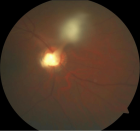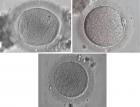Abstract
Research Article
Physical Performance in the Overweight/Obesity Children Evaluation and Rehabilitation
Cristina Popescu, Mircea-Sebastian Șerbănescu, Gigi Calin* and Magdalena Rodica Trăistaru
Published: 31 July, 2024 | Volume 8 - Issue 1 | Pages: 004-012
Introduction: Childhood obesity is one of the current themes of medical research, being considered not so much a multidimensional condition but primarily a real problem of worldwide interest.
The aim of our randomized study was to evaluate and compare the effects of physical exercise associated with an educational program on clinical-functional status in overweight and obese children.
Material and method: Participants were children hospitalized, through the emergency service, in the Pediatric Department, Craiova Municipal Clinical Hospital, between June and November 2023. 93 overweight and obese children, aged between 2 and 16 years, were evaluated (clinical, paraclinical and functional) by a multidisciplinary team and randomized into the control group (group C – 63 children) and the study group (group S – 30 children). After the resolution of the acute digestive or respiratory disease, the children in group S underwent a program to restore their functional status, based on educational measures (following the 5-2-1-0 rule) and physical exercises, for 12 weeks. Anthropometric data were measured (height, weight, body mass index); physical performance wasevaluated by gait analysis (we used the BTS G – WALK / BTS G – SENSOR 2 system, BTS Bioengineering Corp, Italy) with the determination of four parameters – the Timed Up-and-Go (TUG) test, the symmetry index, the walking test six minutes (6 MWT) and walking cadence or average cadence (steps/min) in both groups of children.
The results were obtained by analyzing the differences in values obtained in the two moments T1 (initial) and T2 (after three months). The proportion of girls and boys was approximately equal within obesity class in each study group. Although we did not obtain statistically significant differences between the monitored parameters, between the two groups, for the two evaluation moments, the children in Group S had a clearly favorable evolution for physical performance parameters, whose average value was improved in T2. Anthropometric data did not change.
Conclusion: The present study confirms the effectiveness of the multimodal (educational-kinetic) program for the physical performance of overweight/obese children. The sustained running of the program at home, with the involvement of the family and the school environment, is essential for the well-being of these children, with a favorable impact on the quality of life later.
Read Full Article HTML DOI: 10.29328/journal.acem.1001030 Cite this Article Read Full Article PDF
Keywords:
Child; Obesity; Physical performance; Rehabilitation
References
- Kopelman P, Jebb SA, Butland B. Executive summary: Foresight 'Tackling Obesities: Future Choices' project. Obes Rev. 2007;8 Suppl 1:vi-ix. Available from: https://doi.org/10.1111/j.1467-789x.2007.00344.x
- Kremers SP, de Bruijn GJ, Visscher TL, van Mechelen W, de Vries NK, Brug J. Environmental influences on energy balance-related behaviors: a dual-process view. Int J Behav Nutr Phys Act. 2006;3:9. Available from: https://ijbnpa.biomedcentral.com/articles/10.1186/1479-5868-3-9
- Swinburn BA, Sacks G, Hall KD, McPherson K, Finegood DT, Moodie ML, Gortmaker SL. The global obesity pandemic: shaped by global drivers and local environments. Lancet. 2011;378(9793):804-814. Available from: https://doi.org/10.1016/s0140-6736(11)60813-1
- Pascanu I, Pop R, Barbu CG, Dumitrescu CP, Gherlan I, Marginean O, et al. Development of synthetic growth charts for Romanian population. Acta Endocrinol (Buchar). 2016;12(3):309-318. Available from: https://doi.org/10.4183/aeb.2016.309
- Oude Luttikhuis H, Baur L, Jansen H, Shrewsbury VA, O'Malley C, Stolk RP, et al. Interventions for treating obesity in children. Cochrane Database Syst Rev. 2009;(1). Available from: https://doi.org/10.1002/14651858.cd001872.pub2
- Bülbül S. Exercise in the treatment of childhood obesity. Turk Pediatri Ars. 2020;55(1):2-10. Available from: https://doi.org/10.14744%2FTurkPediatriArs.2019.60430
- Kotian MS, S GK, Kotian SS. Prevalence and determinants of overweight and obesity among adolescent school children of South Karnataka, India. Indian J Community Med. 2010;35(1):176-178. Available from: https://doi.org/10.4103%2F0970-0218.62587
- Amed S, Shea S, Pinkney S, Wharf Higgins J, Naylor PJ. Wayfinding the Live 5-2-1-0 Initiative—At the Intersection between Systems Thinking and Community-Based Childhood Obesity Prevention. Int J Environ Res Public Health. 2016;13(6):614. Available from: https://doi.org/10.3390%2Fijerph13060614
- ATS Committee on Proficiency Standards for Clinical Pulmonary Function Laboratories. ATS statement: guidelines for the six-minute walk test. Am J Respir Crit Care Med. 2002;166(1):111-117. Available from: https://doi.org/10.1164/ajrccm.166.1.at1102
- Ainsworth BE, Haskell WL, Herrmann SD, Meckes N, Bassett DR Jr, Tudor-Locke C, et al. 2011 Compendium of Physical Activities: a second update of codes and MET values. Med Sci Sports Exerc. 2011;43(8):1575-1581. Available from: https://doi.org/10.1249/mss.0b013e31821ece12
- Taşkın G, Şahin Özdemir FN. The importance of exercise on children. Gazi J Phys Educ Sport Sci. 2018;23:131-141. Available from: https://dergipark.org.tr/tr/pub/gbesbd/issue/36374/336399
- Bai Y, Chen S, Laurson KR, Kim Y, Saint-Maurice PF, Welk GJ. The associations of youth physical activity and screen time with fatness and fitness: The 2012 NHANES National Youth Fitness Survey. PLoS One. 2016;11(1). Available from: https://doi.org/10.1371/journal.pone.0148038
- Zhang M, Garnier H, Qian G, Li S. Effect of 11 weeks of physical exercise on physical fitness and executive functions in children. Children (Basel). 2023;10(3):485. Available from: https://doi.org/10.3390/children10030485
- Popović B, Cvetković M, Mačak D, Šćepanović T, Čokorilo N, Belić A, et al. Nine months of a structured multisport program improve physical fitness in preschool children: A quasi-experimental study. Int J Environ Res Public Health. 2020;17(14):4935. Available from: https://doi.org/10.3390/ijerph17144935
- Cox CE. Role of physical activity for weight loss and weight maintenance. Diabetes Spectr. 2017;30(3):157-160. Available from: https://doi.org/10.2337%2Fds17-0013
- Cimolin V, Cau N, Sartorio A, Capodaglio P, Galli M, Tringali G, et al. Symmetry of gait in underweight, normal and overweight children and adolescents. Sensors (Basel). 2019;19(9):2054. Available from: https://doi.org/10.3390%2Fs19092054
- Porta M, Cimmino D, Leban B, Arippa F, Casu G, Fastame MC, et al. Smoothness of gait in overweight (but not obese) children aged 6-10. Bioengineering (Basel). 2023;10(3):286. Available from: https://doi.org/10.3390/bioengineering10030286
- Darwesh A, Hafez EA, Aboeleneen AM, El-Banna MF, El-Gendy SR. Three-dimensional gait analysis for spatiotemporal parameters in obese children. IOSR J Nurs Health Sci. 2018;7(3):11-16. Available from: http://dx.doi.org/10.9790/1959-0703081116
- Elazeem MRA, Eltohamy AM, Ali MS. Association between body mass index and spatial gait parameters in primary school children. Bull Fac Phys Ther. 2021;26:20. Available from: https://bfpt.springeropen.com/articles/10.1186/s43161-021-00037-9
- Martínez-Vizcaíno V, Pozuelo-Carrascosa DP, García-Prieto JC, Cavero-Redondo I, Solera-Martínez M, Garrido-Miguel M, et al. Effectiveness of a school-based physical activity intervention on adiposity, fitness and blood pressure: MOVI-KIDS study. Br J Sports Med. 2020;54(5):279-285. Available from: https://doi.org/10.1111/sms.14113
- Ruiz JR, Ortega FB, Gutierrez A, Meusel D, Sjöström M, Castillo MJ. Health-related fitness assessment in childhood and adolescence: a European approach based on the AVENA, EYHS and HELENA studies. J Public Health. 2006;14:269-277. Available from: http://dx.doi.org/10.1007/s10389-006-0059-z
- Ortega FB, Ruiz JR, Castillo MJ, Sjöström M. Physical fitness in childhood and adolescence: a powerful marker of health. Int J Obes (Lond). 2008;32(1):1-11. Available from: https://doi.org/10.1038/sj.ijo.0803774
- Laframboise MA, Degraauw C. The effects of aerobic physical activity on adiposity in school-aged children and youth: a systematic review of randomized controlled trials. J Can Chiropr Assoc. 2011;55(4):256-268. Available from: https://www.ncbi.nlm.nih.gov/pmc/articles/PMC3222701/
- Atlantis E, Barnes EH, Singh MA. Efficacy of exercise for treating overweight in children and adolescents: a systematic review. Int J Obes (Lond). 2006;30(7):1027-1040. Available from: https://doi.org/10.1038/sj.ijo.0803286
- Cordellat A, Padilla B, Grattarola P, García-Lucerga C, Crehuá-Gaudiza E, Núñez F, et al. Multicomponent exercise training combined with nutritional counselling improves physical function, biochemical and anthropometric profiles in obese children: a pilot study. Nutrients. 2020;12(9):2723. Available from: https://doi.org/10.3390%2Fnu12092723
- Kelley GA, Kelley KS, Pate RR. Exercise and adiposity in overweight and obese children and adolescents: a systematic review with network meta-analysis of randomised trials. BMJ Open. 2019;9(11). Available from: https://bmjopen.bmj.com/content/9/11/e031220
- Aikenhead A, Knai C, Lobstein T. Do surgical interventions to treat obesity in children and adolescents have long- versus short-term advantages and are they cost-effective? World Health Organization. Regional Office for Europe; 2012. Available from: https://iris.who.int/handle/10665/364519.
- August GP, Caprio S, Fennoy I, Freemark M, Kaufman FR, Lustig RH, et al, Endocrine Society. Prevention and treatment of pediatric obesity: an Endocrine Society clinical practice guideline based on expert opinion. J Clin Endocrinol Metab. 2008;93(12):4576-4599. Available from: https://doi.org/10.1210/jc.2007-2458
Figures:
Similar Articles
-
Parathyroid Functions in Thalassemia Major PatientsAyfer Gözü Pirinççioğlu*,Deniz Gökalp,Murat Söker. Parathyroid Functions in Thalassemia Major Patients. . 2017 doi: 10.29328/journal.hcem.1001003; 1: 015-019
-
Indian spices and Caffeine treatment for Obesity and Cardiovascular diseaseIan James Martins*. Indian spices and Caffeine treatment for Obesity and Cardiovascular disease. . 2018 doi: 10.29328/journal.acem.1001005; 2: 010-014
-
Diagnostic imaging in congenital adrenal hyperplasia – how does it help?Gul Bano*,Claudette Phillips,Sarah Tang,Anup Sharma,Nigel Beharry. Diagnostic imaging in congenital adrenal hyperplasia – how does it help?. . 2020 doi: 10.29328/journal.acem.1001013; 4: 007-010
-
Association between obesity profile and non-alcoholic fatty liver by race/ethnicityMartin Galindo,Katrina M Schrode,Magda Shaheen*. Association between obesity profile and non-alcoholic fatty liver by race/ethnicity. . 2021 doi: 10.29328/journal.acem.1001017; 5: 001-010
-
Evaluation of endothelial function in obese children and adolescentsHacer Efnan Melek,Ayça Törel Ergür*,Gökçe Kaan Ataç. Evaluation of endothelial function in obese children and adolescents. . 2021 doi: 10.29328/journal.acem.1001019; 5: 014-023
-
Usefulness of salivary cortisol as a marker of secondary adrenal insufficiency in paediatric patientsLaura Capdevila,Ariadna Borràs,Eugenio Berlanga,Judith Sánchez- Manubens,Josefa Rivera,Raquel Corripio*. Usefulness of salivary cortisol as a marker of secondary adrenal insufficiency in paediatric patients. . 2021 doi: 10.29328/journal.acem.1001020; 5: 024-028
-
Metabolic syndrome: A case reportDragan Klaric,Marta Martinis*,Marta Klaric. Metabolic syndrome: A case report. . 2021 doi: 10.29328/journal.acem.1001022; 5: 031-035
-
Overlap of two unusual condition in childhood: hibernoma and central diabetes insipidusKübra ARSLAN*,Ayça TÖREL ERGÜR,Mehmet Ali YİNANÇ. Overlap of two unusual condition in childhood: hibernoma and central diabetes insipidus. . 2022 doi: 10.29328/journal.acem.1001023; 6: 001-003
-
Myxedema Coma and Acute Respiratory Failure in a Young Child: A Case ReportRinah Elaisse R Dolores, Marion O Sanchez*. Myxedema Coma and Acute Respiratory Failure in a Young Child: A Case Report. . 2023 doi: 10.29328/journal.acem.1001027; 7: 008-013
-
Physical Performance in the Overweight/Obesity Children Evaluation and RehabilitationCristina Popescu, Mircea-Sebastian Șerbănescu, Gigi Calin*, Magdalena Rodica Trăistaru. Physical Performance in the Overweight/Obesity Children Evaluation and Rehabilitation. . 2024 doi: 10.29328/journal.acem.1001030; 8: 004-012
Recently Viewed
-
Clinical characteristics of patients with respiratory disease and probable COVID-19 at the General Hospital Zacatecas MexicoRuvalcaba-González AP, Escalera-López Fde J, Macias-Ortega BI, Araujo-Conejo A*. Clinical characteristics of patients with respiratory disease and probable COVID-19 at the General Hospital Zacatecas Mexico. Arch Clin Exp Orthop. 2023: doi: 10.29328/journal.aceo.1001014; 7: 007-014
-
Dorsal intraspinal B-cell Non-Hodgkin lymphoma in two patientsPatricia Alejandra Garrido Ruiz*, Marta Román Garrido. Dorsal intraspinal B-cell Non-Hodgkin lymphoma in two patients. Arch Clin Exp Orthop. 2023: doi: 10.29328/journal.aceo.1001015; 7: 015-017
-
Treatment of a Distal Humerus Fracture using an Elbow HemiarthroplastyTade Yanick S*, Liu John L, Miguel A Pirela Cruz. Treatment of a Distal Humerus Fracture using an Elbow Hemiarthroplasty. Arch Clin Exp Orthop. 2023: doi: 10.29328/journal.aceo.1001016; 7: 018-021
-
Masquelet Technique for Reconstruction of a Fourth Metatarsal Defect Following a Low-velocity Gunshot Wound: A Case ReportCastagno C*, Campano D, Fernandez I, Weiss WM. Masquelet Technique for Reconstruction of a Fourth Metatarsal Defect Following a Low-velocity Gunshot Wound: A Case Report. Arch Clin Exp Orthop. 2023: doi: 10.29328/journal.aceo.1001017; 7: 022-026
-
Superior Gluteal Artery Pseudoaneurysm following a Periacetabular OsteotomyTess Szekelyi, Xavier Lannes, Mouas Jammal, Salah Dine Qanadli, Michael Wettstein*. Superior Gluteal Artery Pseudoaneurysm following a Periacetabular Osteotomy. Arch Clin Exp Orthop. 2024: doi: 10.29328/journal.aceo.1001018; 8: 001-004
Most Viewed
-
Evaluation of Biostimulants Based on Recovered Protein Hydrolysates from Animal By-products as Plant Growth EnhancersH Pérez-Aguilar*, M Lacruz-Asaro, F Arán-Ais. Evaluation of Biostimulants Based on Recovered Protein Hydrolysates from Animal By-products as Plant Growth Enhancers. J Plant Sci Phytopathol. 2023 doi: 10.29328/journal.jpsp.1001104; 7: 042-047
-
Sinonasal Myxoma Extending into the Orbit in a 4-Year Old: A Case PresentationJulian A Purrinos*, Ramzi Younis. Sinonasal Myxoma Extending into the Orbit in a 4-Year Old: A Case Presentation. Arch Case Rep. 2024 doi: 10.29328/journal.acr.1001099; 8: 075-077
-
Feasibility study of magnetic sensing for detecting single-neuron action potentialsDenis Tonini,Kai Wu,Renata Saha,Jian-Ping Wang*. Feasibility study of magnetic sensing for detecting single-neuron action potentials. Ann Biomed Sci Eng. 2022 doi: 10.29328/journal.abse.1001018; 6: 019-029
-
Pediatric Dysgerminoma: Unveiling a Rare Ovarian TumorFaten Limaiem*, Khalil Saffar, Ahmed Halouani. Pediatric Dysgerminoma: Unveiling a Rare Ovarian Tumor. Arch Case Rep. 2024 doi: 10.29328/journal.acr.1001087; 8: 010-013
-
Physical activity can change the physiological and psychological circumstances during COVID-19 pandemic: A narrative reviewKhashayar Maroufi*. Physical activity can change the physiological and psychological circumstances during COVID-19 pandemic: A narrative review. J Sports Med Ther. 2021 doi: 10.29328/journal.jsmt.1001051; 6: 001-007

HSPI: We're glad you're here. Please click "create a new Query" if you are a new visitor to our website and need further information from us.
If you are already a member of our network and need to keep track of any developments regarding a question you have already submitted, click "take me to my Query."


















































































































































